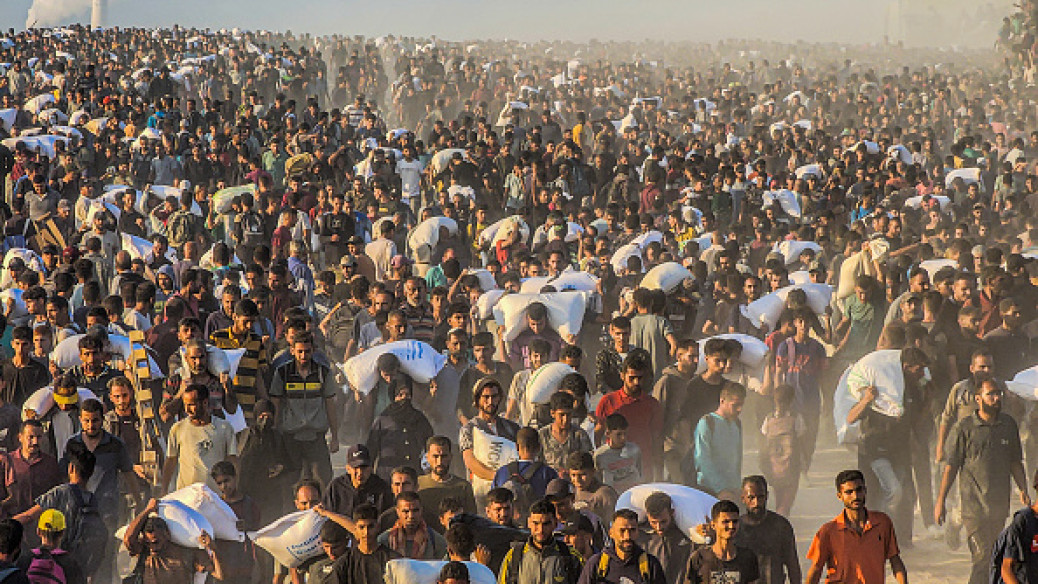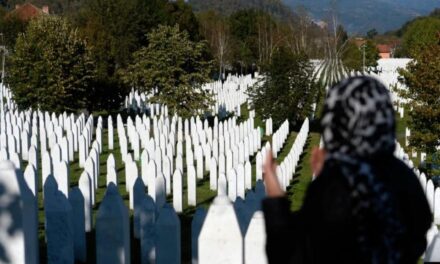The new report sheds light on how the Gaza Humanitarian Foundation’s aid sites triggered the killing of scores of Palestinians [Getty]
A new report published this month via the Harvard Dataverse reveals that at least 377,000 people in Gaza have been “disappeared” by the Israeli military since October 2023, with half of that number believed to be children.
The report, authored by Israeli professor Yaakov Garb, uses data-driven analysis and spatial mapping to examine how Israeli attacks on civilians and the obstruction of aid have led to a dramatic drop in the enclave’s population.
According to Garb’s findings, the actual number of people killed may be far higher than the official death toll, which currently stands at around 61,000.
Maps in the report, based on Israeli military estimates, indicate that the remaining population in Gaza City is around one million, with 500,000 in Mawasi and 350,000 in central Gaza, totalling approximately 1.85 million.
Before the war, Gaza’s population was estimated at 2.227 million. The discrepancy points to at least 377,000 people now unaccounted for.
While some may be displaced or missing, the scale of the gap has led analysts to conclude that a significant number are likely dead, suggesting the real death toll could be many times higher.
Access, obstruction and aid site design
The report also critically assesses the role of the US-backed Gaza Humanitarian Foundation (GHF), arguing that its structure appears to have been shaped more by Israeli military strategy than by humanitarian needs.
Using location data and spatial analysis, Garb finds that most of Gaza’s population was unable to reach GHF aid compounds.
These sites were largely inaccessible, cut off from the southern areas of Gaza by the Israeli-controlled Netzarim corridor. Their location inside declared “buffer zones” meant that civilians seeking aid had to enter areas formally barred to them by the Israeli army.
According to the report, poor infrastructure, lack of motorised transport, and a near-total absence of safe passage routes made access even more difficult.
Garb writes that the design and operation of the aid compounds “seems likely to be an engine for continuous friction and mishap”, noting that the allocation model, providing rations for exactly 5.5 people for 3.5 days, effectively forced civilians to make repeated, dangerous crossings into militarised zones.
“The fact that four of the five compounds lie south of the Morag corridor – repeatedly indicated by Israeli officials as the intended destination for concentration of Palestinians to be displaced from the remainder of Gaza in an impending intensification of the military attacks – is not reassuring,” the report warns.
No dignity, no protection
The report highlights that little to no measures were taken to protect the dignity or safety of civilians seeking aid. The sites lacked basic facilities such as shade, water, toilets, first aid stations, or dedicated access for vulnerable groups. There was typically only one entry and exit point, no crowd management, and scenes of chaos were common.
The report argues that the very architecture of these aid compounds was designed in a way that risked repeated outbreaks of disorder, conditions then used to justify violence against civilians.
“Overall, these aid compounds seem to reflect a logic of control, not assistance, and it would be a misnomer to call them ‘humanitarian aid distribution hubs’. They do not adhere to humanitarian principles, and much of their design and operation is guided by other objectives, which undermine their declared purpose,” the report concludes.
The report comes as Gaza’s health ministry confirmed on Tuesday that at least 450 people have been killed and around 3,500 wounded since late May while trying to access humanitarian aid.
According to the ministry, most of those killed were struck near or on the way to GHF distribution sites backed by the United States.














